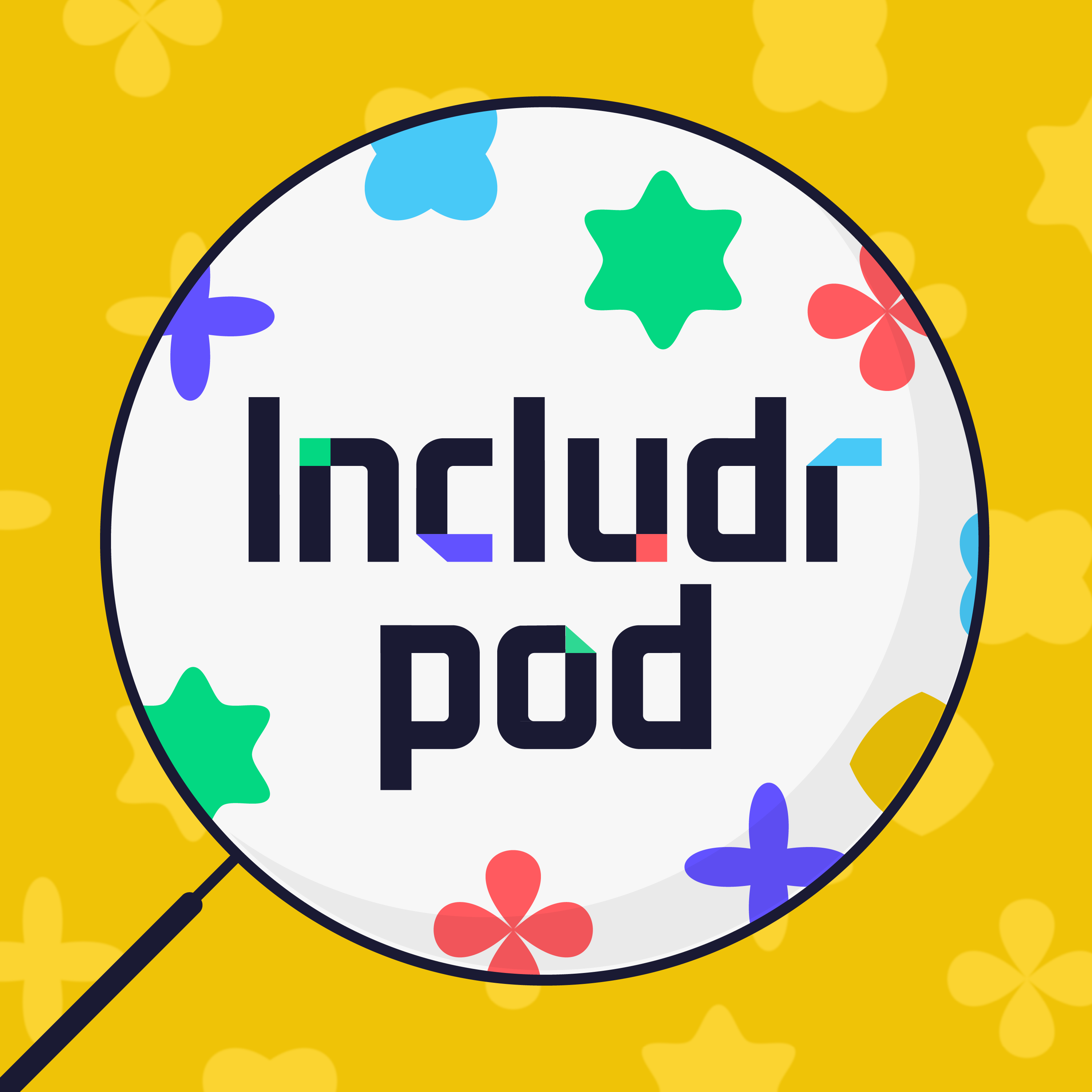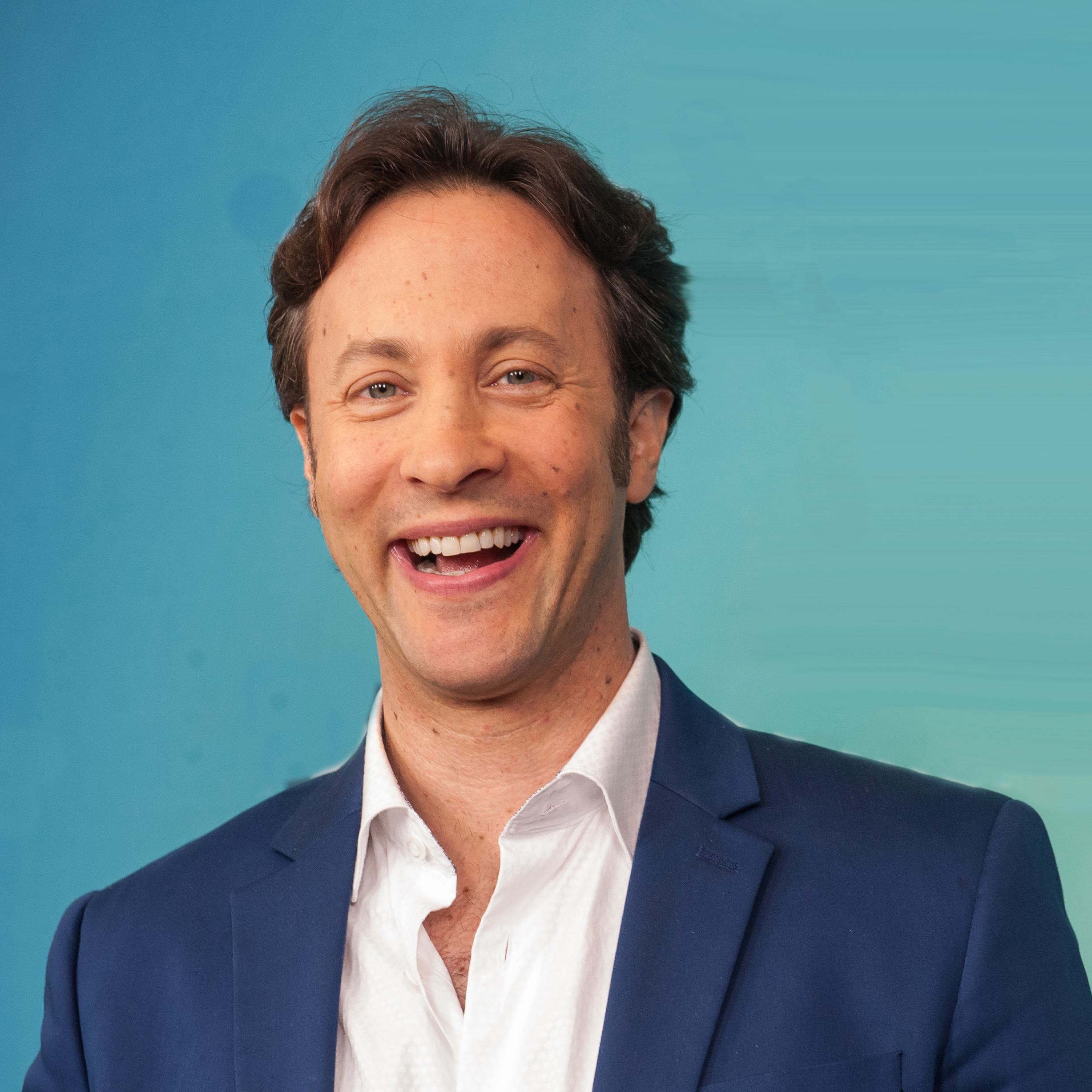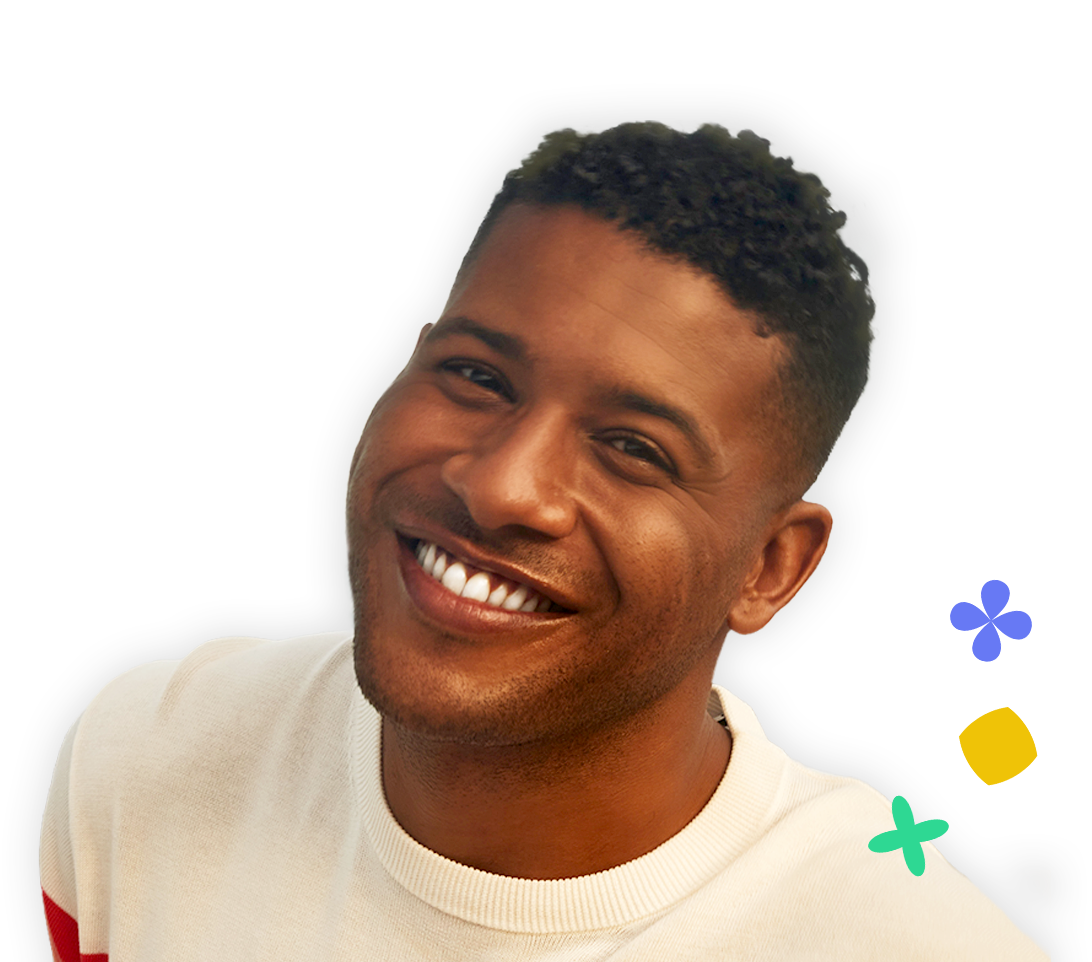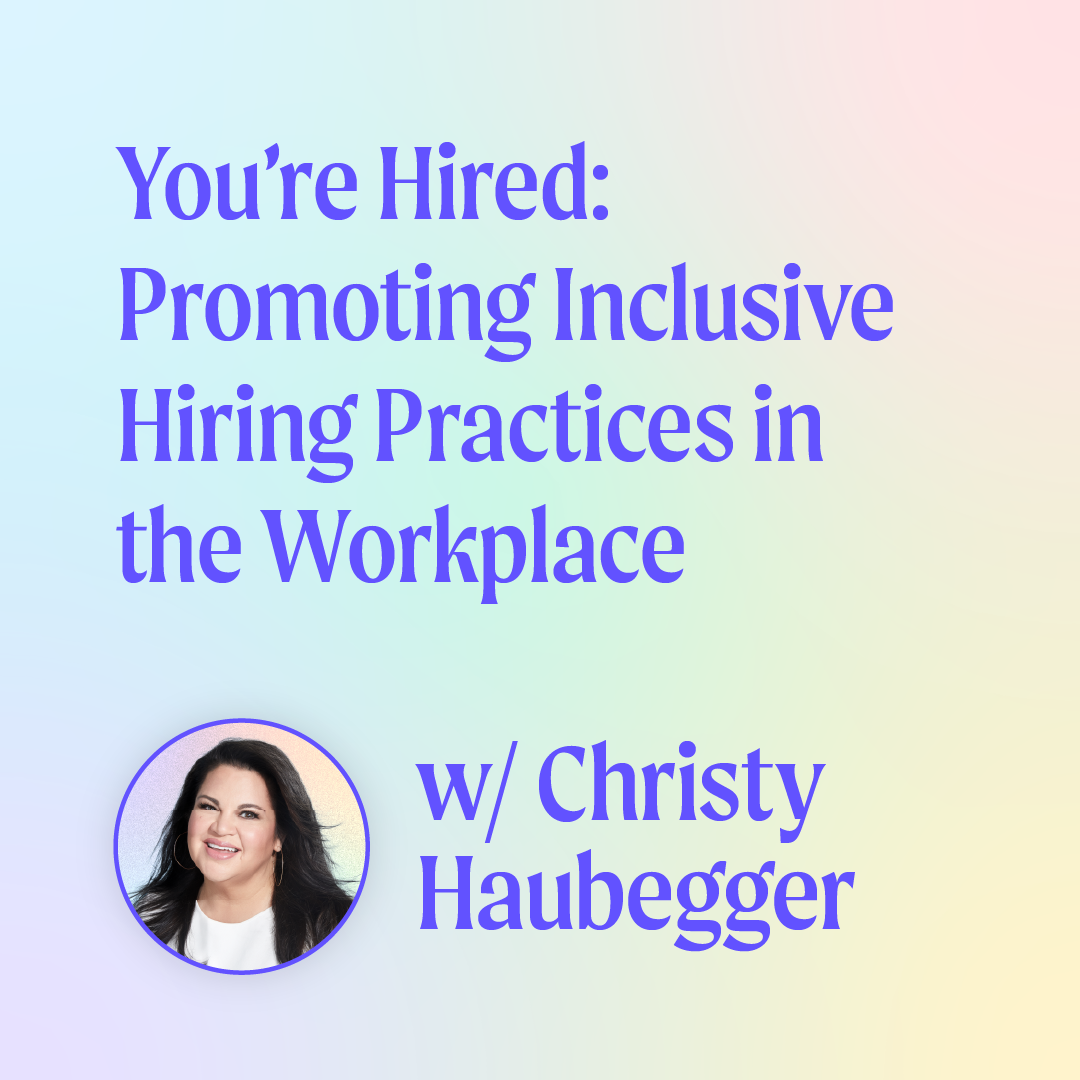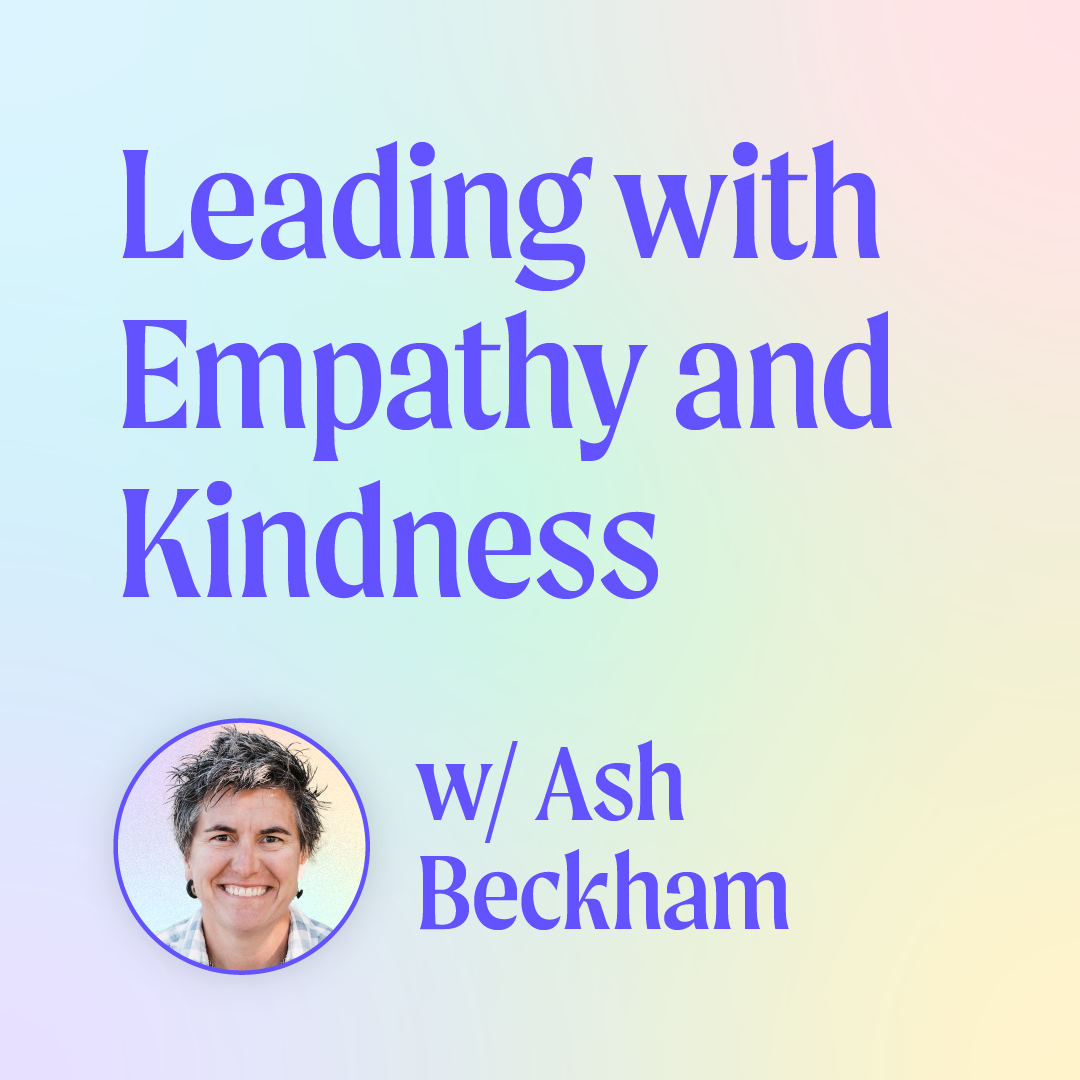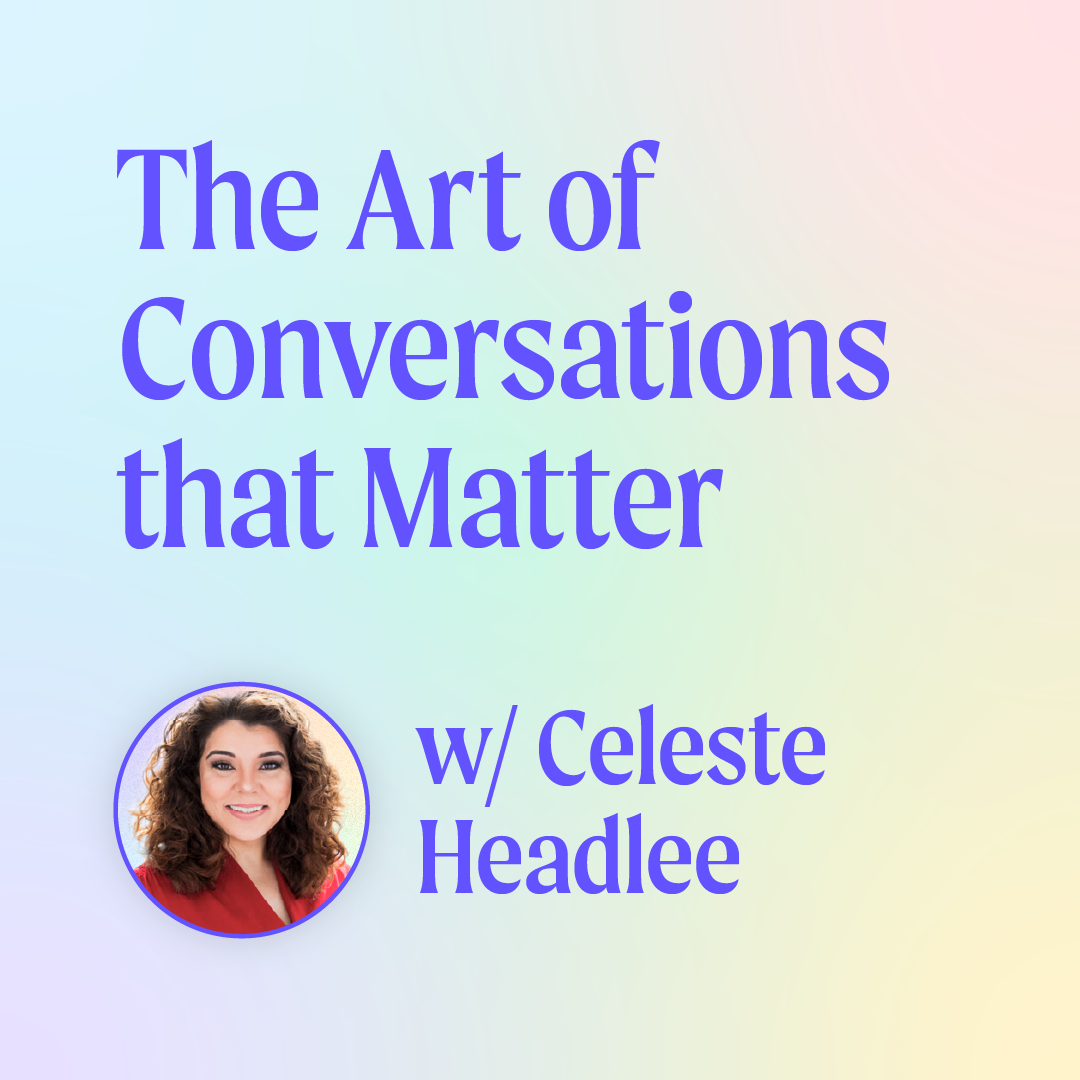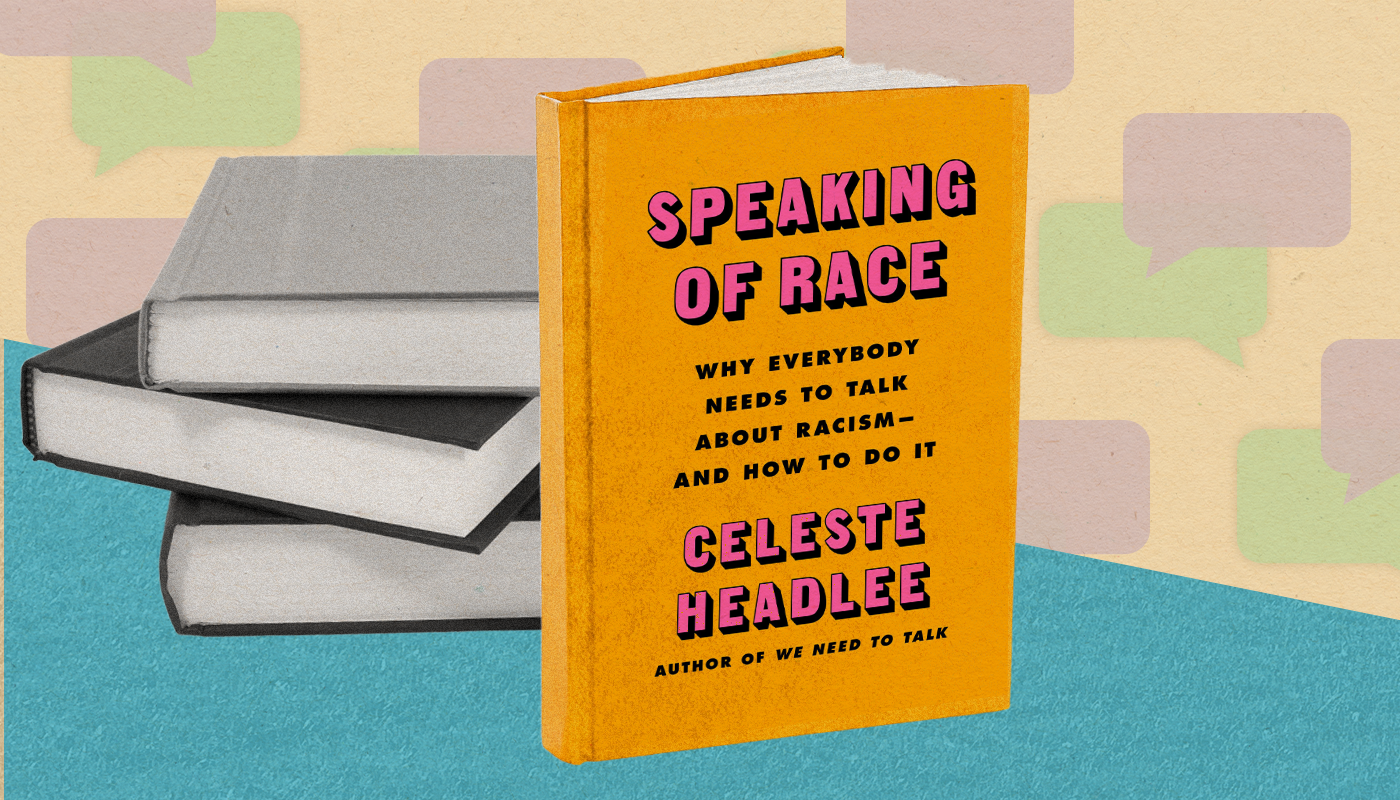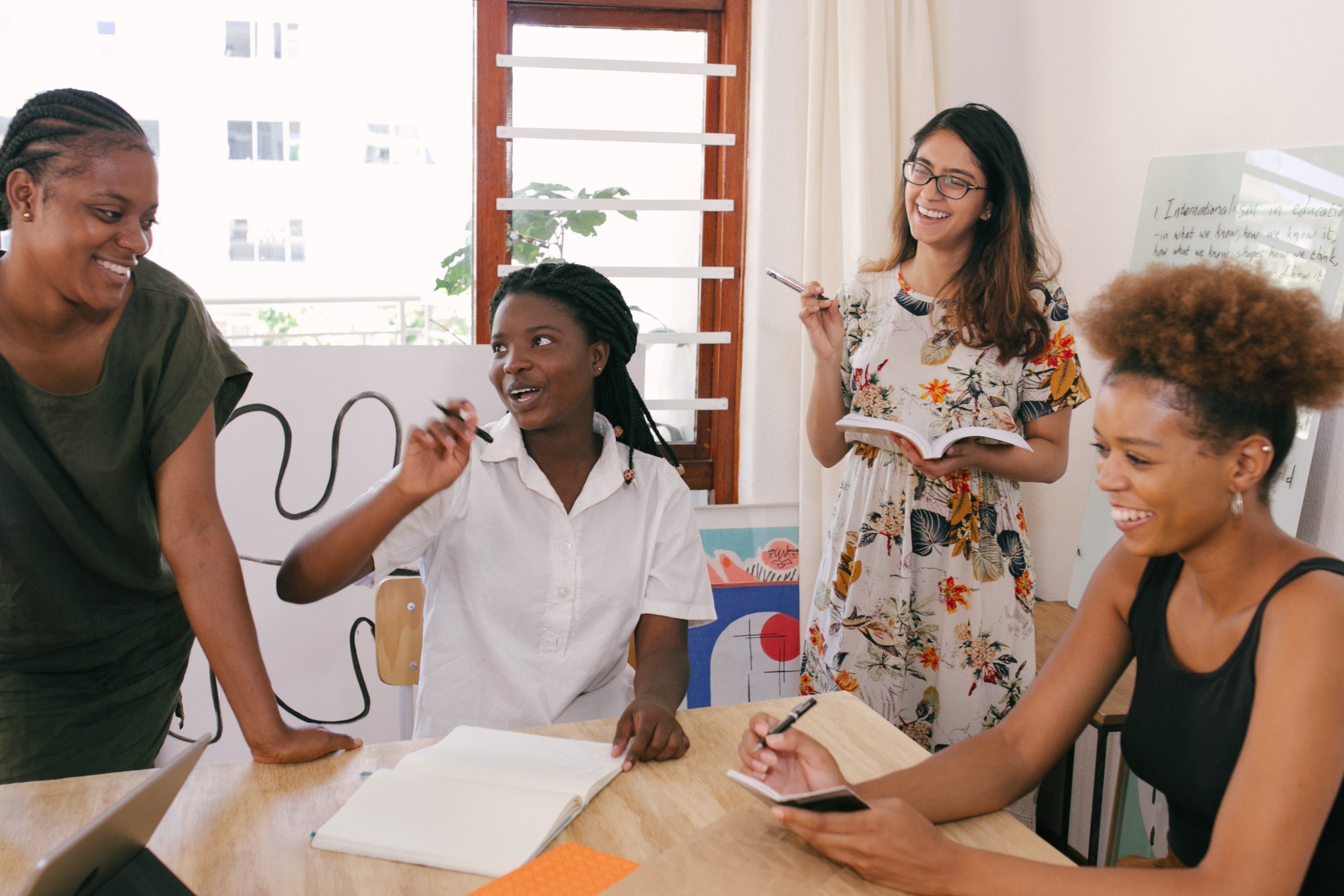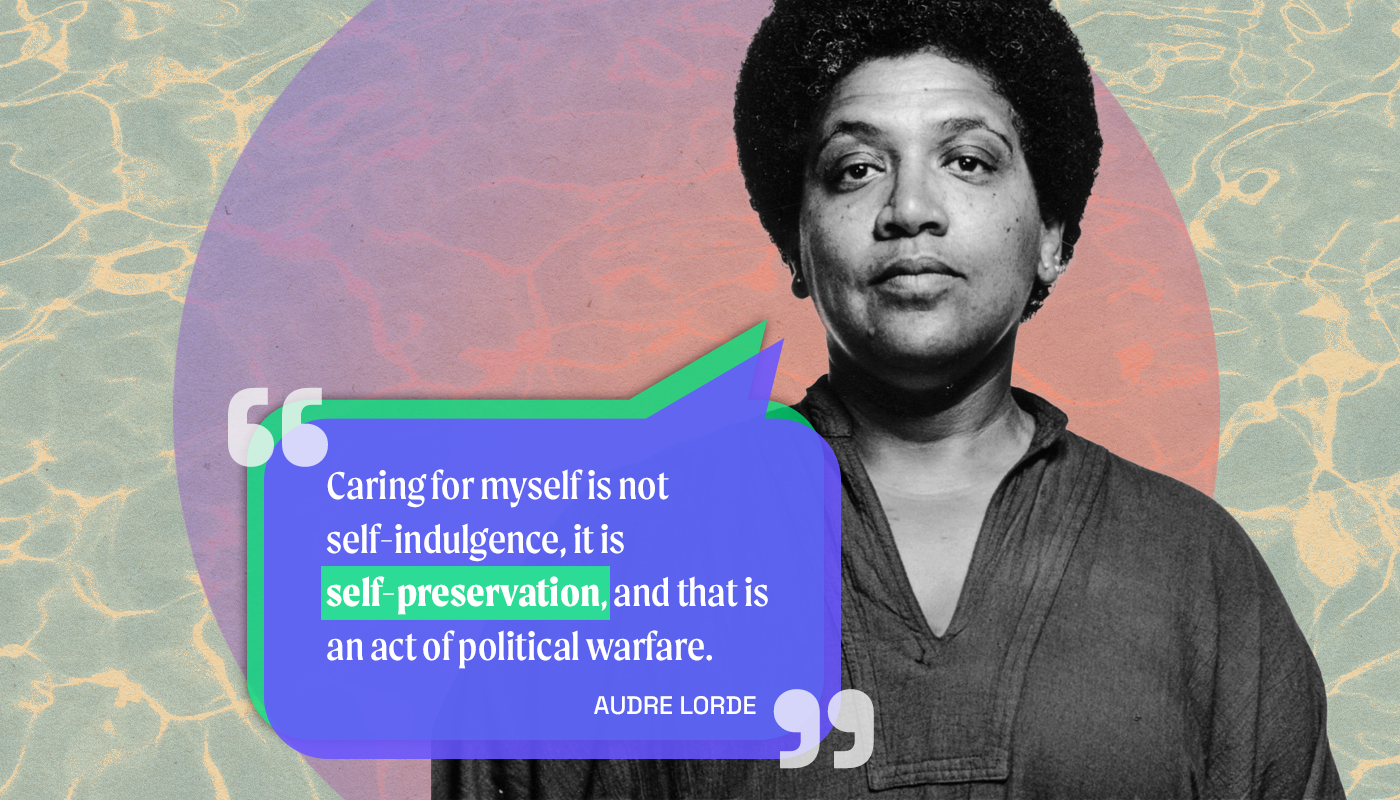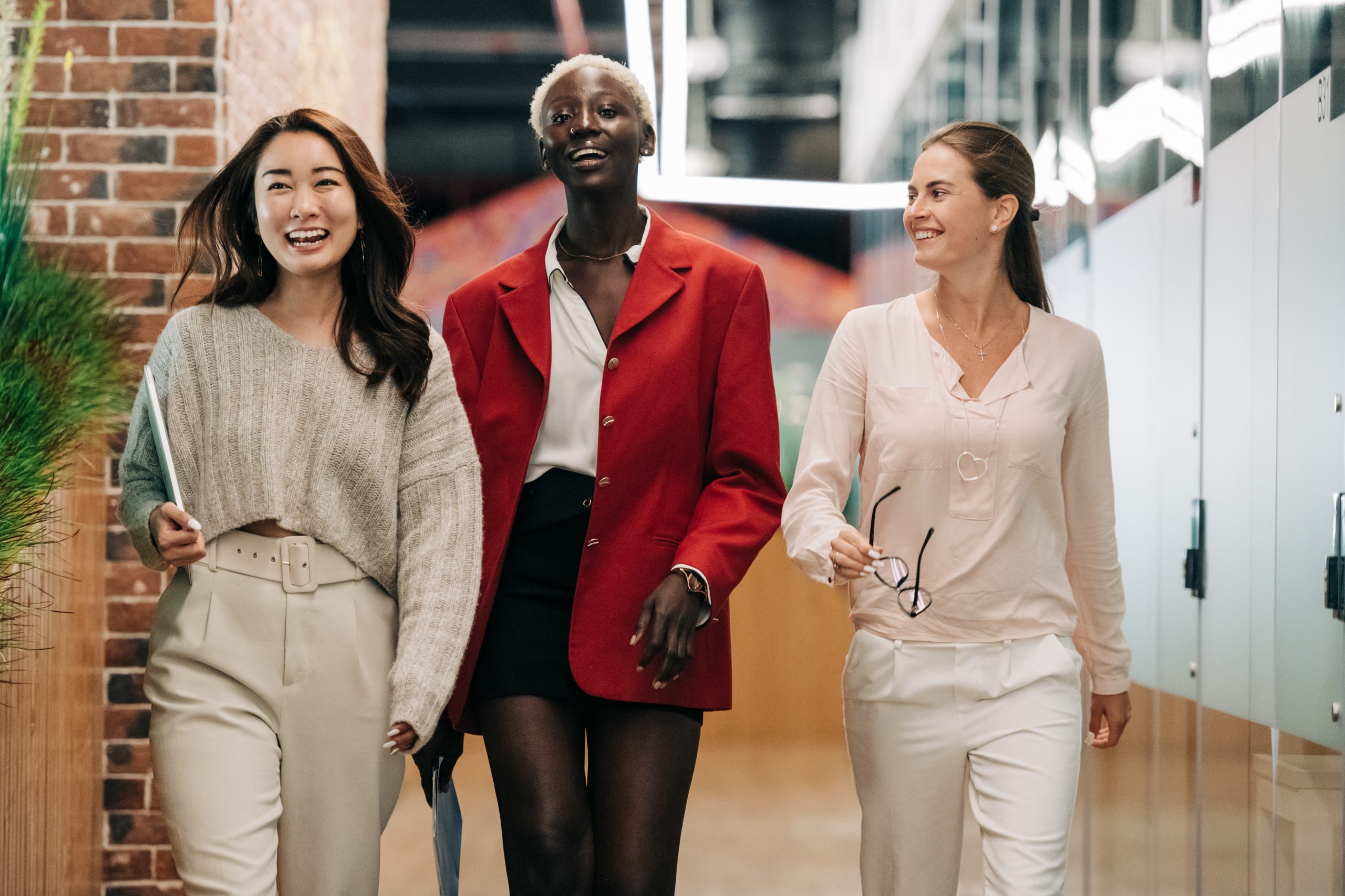This is your brain on bias!
Episode Description
Bias: we all have it on some level, whether consciously or unconsciously. But how is it formed in the first place, and how do our brains subconsciously keep it going? On this episode of IncludrPod, Jeffrey is joined by David Eagleman, a neuroscientist, New York Times best-selling author, technologist and entrepreneur. David studies brain plasticity, the neuroscience behind human creativity, and the neural functions we aren’t even yet aware of. During the episode, David helps us learn more about the brain’s role in the formation of bias, us vs. them mentalities, and empathy. He’ll help us discover how we can harness our own cognitive processes personally and professionally to live life more intentionally, and form more authentic connections with others—despite our differences.
On Air With
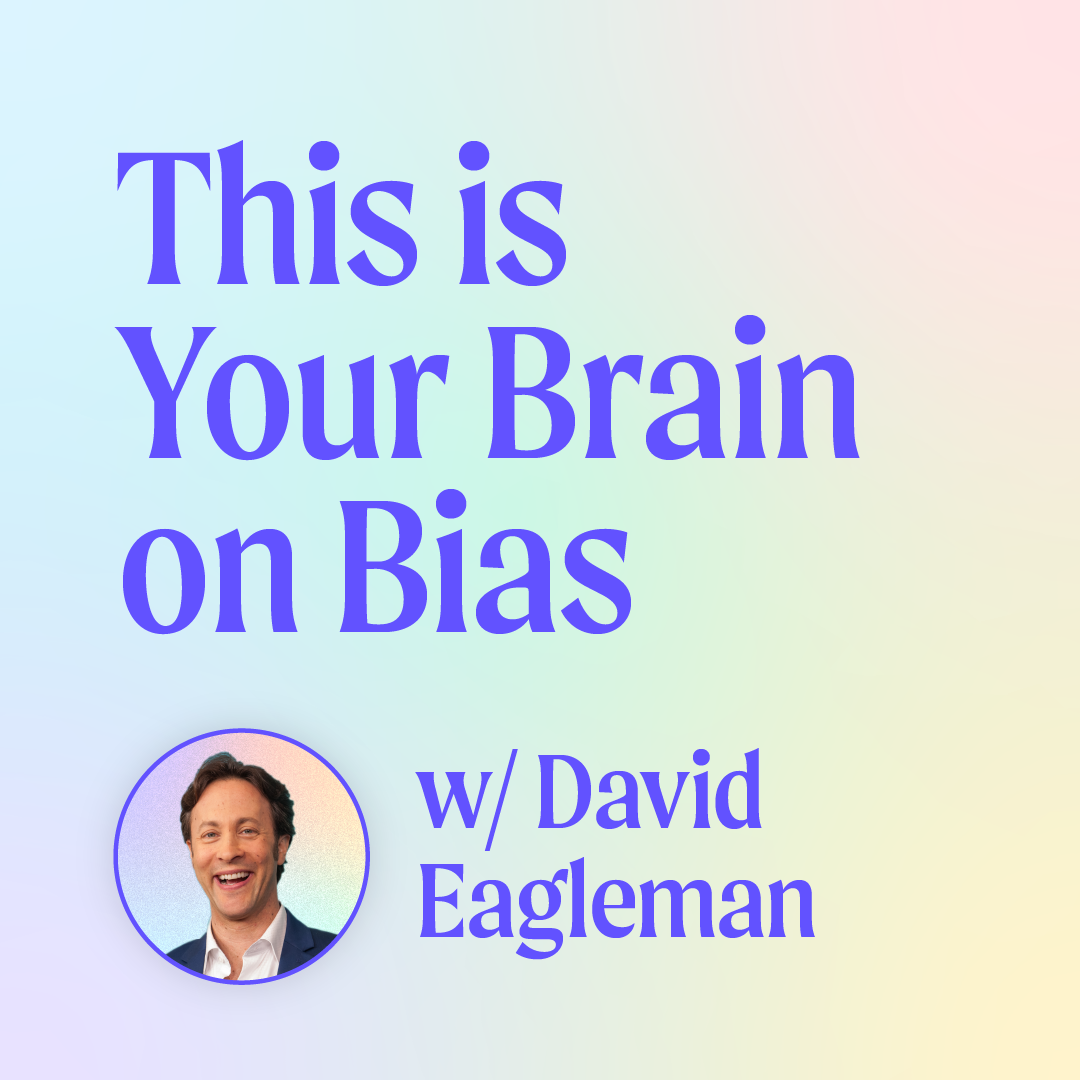
Episode Transcript
While IncludrPod is audio-based content, we’ve also transcribed each episode so everyone can enjoy the series. If you can choose, we recommend listening to the audio, which may include emotion and emphasis that cannot be captured on a page. Transcripts are generated using a combination of speech recognition software and human transcribers and may contain errors. Please check the corresponding audio before quoting in print.
Jeffrey [00:00:02] This is IncludrPod, a podcast that explores inclusivity, diversity and how to find common ground with just about anyone all through a scientific lens. I’m your host, Jeffrey Bowyer-Chapman. I’m an actor, podcaster, model and guest judge on the hit TV series RuPaul’s Drag Race. As a Black queer man, I know firsthand that with deep inclusion and acceptance from others I can show up not only as my best self, but as my whole self. Creating a safe space is the foundation of authenticity, and everyone is welcome here. Welcome to the IncludrPod.
Anonymous 1 [00:00:48] So I am a pure POC scholar, who identifies as a South Asian, and I would define bias as having a preference towards something in a specific scenario.
Anonymous 2 [00:01:03] Every day we are affected by biases. Every decision that’s made has bias in it. Every perception of you and every perception I make of somebody of a story has bias.
Anonymous 3 [00:01:18] I think a person’s environment is a large factor of how they mold their perception and opinions of the world and of people.
Speaker 4 [00:01:27] I would say an experience that I’ve had with bias is where, for example, like I worked in a project earlier this summer with a faculty member, and she also mentioned that I could work in another project and I didn’t have to go through an interview process. And so my case, because they’d already worked with me and she had like a really good impression of me, she was able to kind of like almost put a bias towards me and take me in and to this project.
Jeffrey [00:02:02] Bias, we all have it on some level, whether consciously or unconsciously. But how is it formed in the first place? And how do our brains subconsciously keep it going? As scientists uncover more about the inner workings of the most mysterious organ of the human body, you know the one that named itself? Yeah, that one. We’re gaining valuable insights into the cognitive processes that shape our society and what we can do to make a more inclusive and empathetic choices in our everyday lives. Today, I’m joined by David Eagleman, a neuroscientist, New York Times bestselling author, technologist and entrepreneur. David studies brain plasticity, the neuroscience behind human creativity and the neural functions we aren’t even aware of yet. He’s the author of several books and over 120 academic publications, a TEDx speaker, a Guggenheim fellow and a board member for several organizations like the American Brain Foundation. He’s also the writer and presenter of the international PBS series The Brain with David Eagleman and the Creative Brain on Netflix. In this episode, I’ll be sitting down with David to learn more about the brain’s role in the formation of bias us versus them mentality and empathy. He’ll help us discover how we can harness our own cognitive processes personally and professionally to live life more intentionally and form more authentic connections with others despite our differences. So bias is a buzzword that I think we’re all familiar with, and it’s certainly gained a lot of mainstream use over this past year, namely the implicit nature of implicit bias playing into systemic racism, ableism, LGBTQ and gender discrimination, among countless other examples. Help me to understand what even is bias and what is implicit bias and how is it formed in the brain?
David [00:04:03] So fundamentally, this is something that’s very deeply wired. So and we know this because it’s not just I see you can see this across the animal kingdom, for example, if you have monkeys in one troop, they will fight and die to defend their troop but if you switch them into a different troop, then they’ll quickly come to fight and die for the new troop and so on. So this thing about us versus them is is very deeply ingrained in us. And presumably this comes from our history in small groups, small tribes of, let’s say, up to hundred and fifty people. And you knew everyone in your tribe very well, but you didn’t know those others and that strange tribe coming over the hill. So we had a bias against them.
Jeffrey [00:04:44] So when we take a look back into human history and the evolution of bias in our tribal brains, how a group dynamics and the quote unquote othering of people who are different from us in some way played into the formation of the society today as we know it.
David [00:04:59] There’s always a constant competition with human societies where everybody is trying to rise up and get what they want and a way that humans typically do this is by linking arms with people that are like you. But this can be very complex because sometimes it’s people who look like you. Sometimes this can play out with people who share, let’s say, your sexual orientation or your hometown or your favorite football team. This can be very multilayered, who at any moment is linking arms with whom to try to get what they want. But as a result, when we think about society and the way it’s come to be, it’s a very complex thing because it’s predicated on competition at every level by people trying to, you know, trying to get things for themselves.
Jeffrey [00:05:48] Help me to break it down in layman’s terms. What are our brains actually doing when we feel included or excluded from a certain group? Or more specifically, when we see another group as the enemy?
David [00:06:01] It turns out when we are excluded, the areas in our brain that become active are the same as those for physical pain. So just as an example, imagine that you and I and someone else are throwing a ball around and we’re throwing the ball in a triangle. But then at some point I start throwing the ball to the other person and he’s throwing it back to me and we’re leaving you out. You’re not getting, you’re not getting to play. Well it turns out people have experimented with this in the brain scanner and the errors in your brain that light up are those that are involved in physical pain, and it’s actually even helped by things like Tylenol. So the pain that you feel from social exclusion. So that’s that’s one thing in terms of seeing another group as the enemy. Let’s say you look at propaganda posters from World War I, how America portrayed our enemies, how our enemies portrayed Americans. You see this stuff all the time where you make the enemy equivalent to vermin, or some, you know, some animal, but not human like us. Anyway, unfortunately, the stuff is so easy to plug into people’s brains and make them feel like, oh yeah, that person really isn’t like a human, they’re like an animal or they’re like, you know, they’ve got some, they’ve got some moral pollution about them such that they’re not like me, and then it becomes very easy to hurt them in some way. And so that’s what, so when when you do brain imaging on that, you find that the the networks in the brain that understand another human are essentially getting tuned down so that you’re not understanding the other person as a human, but you’re understanding them more like an object.
Jeffrey [00:07:40] I’m so curious to know what are some of the experiments that you’ve conducted or that you’re aware of that illustrate some of these concepts?
David [00:07:49] So, so in my lab, we got very interested in this topic some years ago. So here’s an experiment we did. Imagine you’re in the brain scanner. I don’t know if you’ve ever seen one of these, but it’s sort of a long tube that you slide into. So and we’re measuring where the activity is in your brain. OK, so now you see six hands on the screen, they all kind of look alike. The computer randomly goes round dododo and pick one of the hands, and then you see that hand gets stabbed with a syringe needle. Now what happens is a set of errors in your brain lights up in that network is what we summarizes the pain matrix. It’s the same as if your hand got stabbed, but of course, it’s not your hand getting stabbed. You’re just seeing someone else’s hand getting stabbed. So this is the neural basis of empathy. You are seeing somebody get hurt and you carry your brain essentially simulates that pain. OK, but the experiment is this. We now label each hand with a one word label Christian, Jewish, Muslim, Hindu, Scientologist, atheist. Now the computer goes dodododo picks one of the hands you see, the hand gets stabbed. And the question is, does your brain care as much if it’s a member of your of one of your outgroups versus your in-group? And the answer, unfortunately, is yes, your brain cares much more if it’s your in-group that just got stabbed, if it’s your outgroup just doesn’t care as much. So this is very depressing because it means that this is not the kind of thing that you have any conscious access to. It’s not like you can change your brain’s response based on the kind of person you want to be. This is just what your brain is doing at a very low level. We care much more about our in-groups. What’s interesting is how flexible this is. So we did a second experiment where we say, OK, the year is 2025, and these three religions are now teamed up against these three religions. And of course, it’s chosen randomly each time. And it turns out that now you care if you see your in-group get stabbed, but you also care much more for your allies. For these two religions that were randomly lumped with yours and suddenly you see them get stabbed, you think, oh, you know, your brain cares more about that because you were just told in one sentence that they’re your allies. And the thing to note about this whole thing is these are one word labels. I mean, there’s the hands all look alike. There’s nothing different. It’s just a single label is enough to completely change your brain’s behavior about this stuff. But it turns out that this in-grouping and out-grouping is something that’s so fundamental that it’s quite easy to fall into this.
Jeffrey [00:10:23] So when we’re talking about in-groups and out-groups and categorizing it with different religious groups, I mean, those are titles that we aren’t born with. Those are identities that we essentially adopt throughout the course of our lifetimes if they’re not placed upon us at birth from our families. How does that experiment play out when it comes to biological predisposition like race or sexual orientation or gender?
David [00:10:46] Exactly the same way. So people have done these experiments now with every flavor that you can imagine, and it’s all the same way. And even when it comes to something like racism, you see these kind of things all the time. Somebody might feel like they’re a racist against this group, this race, this sexual orientation. But then they’re their neighbor is that but they have something else in common, like they both love the same football team. And then that that other distinction goes away. And now the important part is, hey, we both love this thing together. And in fact, this is this is what fascinates me is the complexity of our alliances and our allegiances. And I actually think there’s something to be mined here that’s very important. So a story that I find very interesting and important is what happened with the Iroquois Native Americans who in the 15th century were up in the top of North America were fighting with each other all the time. You know, really bloody infighting between these troops and a leader came along who came to be known eventually as the great peacemaker. And what he did is he forged peace by assigning each Tribe member to one of nine different clans, so each to whatever Tribe you’re in. You know, some people are in the wolf clan or the bear clan or the turtle clan and so on. And now what happens is you’ve got these five Tribes, but you’ve got this crosscutting allegiance to these nine clans. And so you’ve got these overlapping dual allegiances. And it complicated the notion of us versus them, and it defanged this, this inter-tribal warfare, because now it wasn’t so easy for our tribe to go attack the other tribe because, well, look, I’m in the wolf clan and he’s in the wolf clan over there, so it’s not so easy now.
Jeffrey [00:12:29] So I think that from what you’re telling me, it seems fairly obvious that when it comes to our natural ability to be able to identify our in-groups and out-groups, someone who has the same skin color as me, someone who’s the same gender or sexual orientation as me would be my natural in-group fellow. How do we, as individuals begin to identify what our own biases are towards out-groups and, you know, whether they be conscious or unconscious?
David [00:12:58] Yeah, this is good. I think I think a big part of what neuroscience can contribute here is understanding our own biases. So for example, you know, one of the things that really struck me about this experiment that we did that I just told you about is that we also asked people to fill out a questionnaire before they did the experiment about how they felt about their fellow people and whether they thought they had empathy generally towards other people and so on. And it turns out the results that people answered on the questionnaire were were actually anticorrelated with what we found in their brains. In other words, if somebody really had a big bias between in-group and out-group, you know, might have answered on their questionnaire that they loved everyone equally and so on. Now what this tells me is that we don’t have that much insight into who we are, but also that there’s lots of ways that we can override our bias. In other words, a person could be lying and say, oh, I care about everyone equally, even though they don’t, they don’t mean it. But another possibility is that they actually do behave in a really good manner even though their brains have these built in biases. They find ways to override these. So so the first thing that’s so important is to understand our own biases. And so, for example, we were all in our social echo chambers, and we tend to accept the logic of our in-group and reject the logic of our out-groups. And as we come to understand the kind of biases that we have, we can actually alter our behavior to make it more altruistic in a way that’s that’s meaningful. One of the things that I’ve been seeing a lot, which is super helpful, is as we come to understand our own biases better is to figure out ways to blind the biases. So something that a lot of organizations have been doing and this has been true for over a decade, is coming up with ways to minimize the chances that prejudices will interfere with our judgment. So, you know, there’s this famous thing about violin auditions, and nowadays they’re done behind a curtain, so you can’t or a little wall thing, so you can’t see the candidates. You don’t know if it’s male or female. You know anything about the the race, the orientation, anything and you just hear who’s playing the most beautiful violin music. So the idea is, you know, biases can be subconsciously triggered. And so there are all kinds of ways to remove the opportunity for bias.
Jeffrey [00:15:19] Yeah, I remember I’m familiar with the violin audition experiment that you’re referring. If I remember correctly, it was somewhere around the 1950s in America, where most orchestras, if not all orchestras, were entirely conducted, comprised of men. The theory being that men played better than women and the findings were that women played just as well as men, If I remember correctly. That was something that must have shocked and surprised many at the time. What other insights might people find interesting or most surprising about your work and findings when it comes to bias and group dynamics?
David [00:15:56] Even for those of us who think we don’t have biases, we do. For example, if I asked you to imagine, you know, let’s see you imagine a 60 year old man twisting his ankle and falling down on the sidewalk, you know, would you have empathy towards that person? Presumably, you’d feel empathic towards that person. But now I tell you, Oh, you know, he was at a Trump rally, let’s say. Then suddenly you changed, because now he’s supporting a candidate. Maybe you aren’t for Trump. Maybe you are. And so you think, well, that jerk, he deserves it. And so no matter how it magnanimous, we think we are, it’s very easy to to to have these biases, and so that’s why I feel like the really important part is to understand the tricks and tactics of dehumanization, of moral pollution, of of figuring like just as an know, just in that example, figuring, well, anyone who’s at a Trump rally is, you know, a terrible person, but you know, he’s somebody’s dad and grandpa and whatever. One of the things that I’ve really appreciated, I think, is how we can build better models of other people because as we started off talking about, we’re not built for this, we’re built to have our in-groups in our out-groups. But happily, this is done through art and literature, which has forever waged this behind the scenes battle against dehumanization. Because the whole reason is a good theater player, a book allows you to step into the shoes of somebody else. And one of the observations that scientists have made is that since essentially the 1400s, the level of violence has been going down. One of the speculations about this has been that this is actually correlated with the advent of the printing press in 1440 suddenly started getting books printed. And what happened is this slow decline in violence in the human race, and part of the idea is that, you know, books allow you to step into other worlds that you didn’t know about. And so our experience with being other people has just expanded.
Jeffrey [00:17:56] As you’re saying this, I’m realizing that the dangers of revisionist history and the untrue tales that we’ve been taught in social studies and history classes for so long in this country and where I grew up in Canada. If more accurate and true versions of these stories were actually told, I think it’s the perfect opportunity to start exercising this empathy muscle in a much more consistent and intentional way.
David [00:18:19] Give me an example of what you’re thinking about, what kind of stories.
Jeffrey [00:18:22] Where I grew up in Canada, we learned a lot about the First Nations People and native tribes and about colonization and about white Europeans coming over to Canada. And we were taught that it was a very wholesome, very mutually beneficial experience for both groups involved. What we know today is that that simply isn’t true, but with that story being presented with the way that it was, it was easy to demonize and dehumanize First Nations People and to make the Europeans or white men and women the heroes and sheroes of the story.
David [00:19:01] Mm-Hmm. Yeah. Yeah, yeah. You know, and that’s a really good point. History is always the pack of lies told by the winner. And so it’s tough. It’s tough to do this, but I guess we have more information now and capacity now to go back and figure things out than ever before. It used to be that, you know, let’s say you were the Roman Empire. You would conquer all these territories around you and essentially you were the only ones writing the history. But now there’s an opportunity for everyone to have a voice in that. And the difficult part is, history is always so complex in terms of when there are friendships, when there’s enmity, when there’s domination, when there’s cooperation. These things are always complex. And so I think from now on leveraging all the information sources we have, we’re just going to have to understand that history is not a simple story on either side. It’s millions of humans interacting in their super complex human ways.
Jeffrey [00:20:02] I am fascinated by the information David shared about implicit bias throughout history and even in the animal kingdom. Although it may seem discouraging to hear that we’re all naturally hardwired to form biases towards certain out-groups, as David calls them. The good news is that humans are highly adaptable and capable of positive change through awareness and conscious effort. But the question remains, how can we overcome our internalized biases so we can create a more empathetic society? Here’s what David had to say.
David [00:20:36] I think it’s these things that we named, which is coming to understand your bias, which means studying psychology and neuroscience, just understanding that you are, I am, we all are biased and this is how we’ve been since ancient times. Building a better model of others. And that’s of course, you know, as I said, I’m a, you know, I’m a big fan of literature. You’re a big fan of theater and movies. And you know, one example is when Harriet Beecher Stowe published Uncle Tom’s Cabin in 1852. That was an opportunity for a lot of readers to step inside a shack that they otherwise would never have entered. And then once they were in, it wasn’t really easy to relegate the characters to an out-group anymore. And this is true of everything that we you know. What’s quite cool now is we have a broad diet of in-take. If you just randomly turn on the TV, you’ll see all kinds of stories about all kinds of people. And that’s super useful.
Jeffrey [00:21:34] How do we implement the undoing of biased practices into corporate environments, especially as we’re all now heading back into the office’s post post-COVID?
David [00:21:43] You know, happily as far as we can tell. I mean, you know, corporations are all more invested than ever before into making sure that that is something that’s taken care of from a high level. And yeah, I think what we all want is a world where we’re all in the in-group, where it just simply doesn’t matter how much melanin someone has in their skin or what their sexual orientation is or whatever. A big part of this just has to do with exposure. I mean, just as a side note, one of the things that I spent a lot of my time in is at the intersection of neuroscience and the legal system. And if you look at something like schizophrenia, let’s say somebody has schizophrenia, they go up in front of a jury. Many of the jurors will say that jerk is faking it. He’s trying to get out of responsibility for whatever he’s done here. But those jurors that know somebody with schizophrenia, let’s say a family member or something have a completely different view because they have exposure to it. They know about it. And so it’s not as easy for them to out-group that instead, they in-group. And so, you know, that’s what’s really lovely. That’s the really lovely potential of the world that we live in now with, for example, the internet.
Jeffrey [00:22:57] Right. Well, speaking of the world of potential, I’m curious to know how early does bias start forming in our brains for children and teens specifically, what are some things that we can do to stop these thought patterns and assumptions from taking hold early on in life?
David [00:23:11] Hmm. I think the key is just teaching children, just emphasizing the things that they have in common with everybody. So, you know, it’s a matter of what things get pointed out to the children as, oh, that’s something that’s really different and special about that person. Those are the things that then the children start paying a lot of attention to. If it’s pointed out to them all the time, the question is, OK, when’s it useful? When does that make them notice something that they wouldn’t otherwise notice? I mean, there are a million differences between people like, you know, the amount of this or that chemical in your bloodstream or something. But we don’t notice those things. And the question is what is the right level to point out differences between people?
Jeffrey [00:23:55] I think that where we are right now as a culture in a society, I think that people are aware of some of our shortcomings as humans and are also aware that we want to do better. So many of us are unaware of actually how to do better. So if there were one tangible practice or thing or something to pay attention to or to be aware of that, myself and the listeners can take away from this conversation to start identifying bias and have the consciousness to start undoing said bias, what would you suggest or recommend?
David [00:24:32] Yeah, I would recommend really becoming aware of our gut feelings of things. And by the way, it’s perfectly fine because that’s what you’re yoked with. Is this evolutionary history where we’ve all got these biases. We like people from our hometown who look like us, who act like us in various ways. This is the way we’re wired, but really coming to pay attention to that and understand it to understand the tricks of dehumanization so that we come to recognize those and to build good models of other people and to understand that, you know, I mean, look, I also think this is one of the challenges of what’s going on with the movements now. And you know, we’re all struggling with this thing is how do you understand an individual as an individual? Because, you know, judging a person by the content of his or her character is the key thing, and it’s all very complex. Now what to teach our children how to work with this? Because there’s a lot of lumping into groups that’s going on. And in some sense, this is the opposite of what we want because that makes groups, and the fact is that real life is made up of individuals who have all kinds of interesting qualities, some good, some bad. You know, again, I’m going to this thing that I’m just trying to hang on to. I’m just trying to understand it better. This thing about complexifying group memberships so that instead of saying, ah, that person is that group, I’m of this group, I guess there’s no way that we’re going to be pals instead to say, oh, you know, we’ve got this thing in common. We’ve got this other thing in common and figuring out ways to be able to bond on lots of different fronts.
Jeffrey [00:26:13] Right. Races, you know, Blackness is not a monolith. You know, the LGBTQ community is not a monolith. I think it’s very interesting to see how we in marginalized groups have been very much presented as monoliths, whereas the status quo have the privilege and blessing of being granted the space and freedom to be individuals. Yeah, I would love, I would really love to start seeing the undoing of that narrative.
David [00:26:40] Yeah, exactly. I would love to see the undoing where everybody is understood as individuals. And then we could say, hey, you know what? This person is in a marginalized group, but here are five people in a marginalized group but they’ve all got, yeah, different lives, different things, different qualities. And by the way, these four I really like and this one I don’t like so much and whatever. But it’s but it’s but it’s nothing to do with the group. That’s I mean, that’s where we all want to get to. And what we need to do to get there is to be able to overcome these initial biases that we all have.
Jeffrey [00:27:17] Mm hmm. Well, I hope that with the help of this conversation and all of the insights that we’ve gleaned through your expertise that myself in the audience and us as a species can start down that path of seeing all of us as one, a collective consciousness, a collective being the human race.
David [00:27:35] Terrific. Thanks, Jeffrey, for having me.
Jeffrey [00:27:41] My conversation with David shed light on why humans are naturally predisposed to forming internal biases towards others. It can be unsettling to think about our own blind spots when it comes to race, culture and identity, but it’s crucial that we all do the work so we can begin to dismantle the systems of oppression that are still firmly entrenched in our society. Our discussion has given me a lot to think about. Here are a few of my key takeaways. Even if we think we’re not biased towards a certain group, all of us are prone to blind spots. It’s important to examine your own beliefs and behavior so we can all work towards uncovering our own internal biases. Self-reflection is key. David mentioned that when we view another person as part of an out-group, it makes it easier for us to dehumanize them. This is partly why violence and war has been so prevalent throughout human history, and it also explains why some people are fundamentally lacking in empathy towards others who hold differing viewpoints or worldviews. David’s theory about the invention of the printing press in the 1400, coinciding with a dramatic decrease in violence, reveals the immense power that art and literature hold when it comes to social change. As we open our minds to other people’s experiences through books, films and art, we can strengthen our empathy muscle to put ourselves into someone else’s shoes. Our conversation got me thinking about my own profession and how the film industry has the power to cultivate empathy in the world when we keep diversity at the heart of storytelling. As a Black queer man, I recognize that Hollywood wasn’t made for actors like me, nor did it ever intend to give me a seat at the table. And while the film and TV industry is making strides towards representation of diversity and inclusion on screen, there’s still a long way to go and much work to be done both on and off camera. Thanks for listening to IncludrPod, the podcast exploring inclusivity, diversity and empathy, so we can all be kinder to one another. If you like what you heard, make sure to subscribe, rate and review the show wherever you get your podcasts. For more information, blog posts, show notes and more visit includr.org. Stay tuned for our next episode. I’m your host, Jeffrey Bowyer-Chapman. See you next time.


